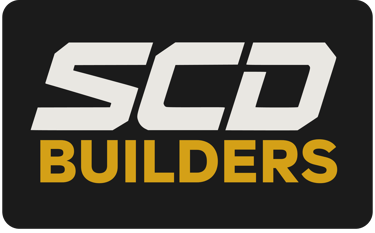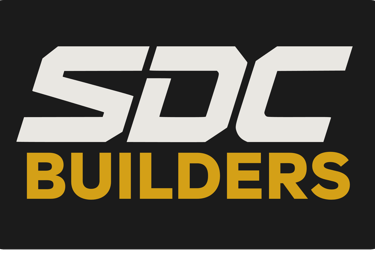Featuring Tim Bender
SCD Builders presents “Real Electricians Behind the BIM,” a series that highlights field-trained tradespeople who now lead the charge in BIM/VDC. In this episode, meet Tim Bender—an electrician who transformed his real-world jobsite experience into digital coordination to build smarter, safer, and faster.
REAL ELECTRICIANS BEHIND THE BIM
11/10/20254 min read
Featuring Tim Bender
Transitioning from hands-on electrical work to virtual coordination isn’t easy. For many tradespeople, the biggest challenge isn’t the software—it’s stepping into a completely new way of building. In this episode of Real Electricians Behind the BIM, we feature Tim Bender, an experienced electrician who shares candid insights about shifting from field installation to digital construction.
With decades of field knowledge and leadership experience, Tim brings an invaluable perspective on why BIM/VDC needs real builders—not just computer operators.
The Hardest Part of Moving From Fieldwork to Digital Construction
When asked about the biggest challenge of the transition, Tim’s answer was immediate:
“Staring at a screen every day.”
For someone used to walking a jobsite, solving physical problems, and operating tools, the change to an eight-hour digital workflow is real. Even with a background in gaming, the monotony of constant screen time is difficult.
But he doesn’t see it as leaving the trade—he sees it as evolving it:
“It’s just a different set of tools. I’m adding to that set of tools right now.”
How BIM Changed the Way Tim Sees Construction
Fieldwork teaches a straightforward rhythm: identify the task, install, and get it done. If a problem arises, someone upstream (designer, engineer, GC) usually has to resolve it.
Digital construction flips that dynamic:
“In the field, you’re just doing the work and getting it done. Now I’m the one figuring out the problems—and hopefully preventing them before they even exist.”
For Tim, that’s exactly where the industry is heading:
Owners and GCs want fewer surprises in the field
RFIs slow projects down and hit schedules
Poor coordination forces trades into rework and compromises
He sees BIM/VDC as the way to get ahead of those issues:
“If you have the right people looking at the model, you can stop a lot of problems before they ever hit the jobsite.”
With over 40 years of experience uncovering design and engineering issues on projects, Tim knows how valuable early, field-informed coordination really is.
A Career and Life Reshaped by Remote Digital Construction
This career pivot hasn’t just changed Tim’s work—it’s changed his outlook on life and retirement.
Right now, he’s balancing full-time work and training, which is demanding on his schedule and family time. But he clearly sees the upside:
He can work from anywhere—even from an RV or the Bahamas
He can live closer to family and still maintain a full professional workload
He can continue contributing to projects well into retirement
“I’m not far from retirement, and this is something I can do well into retirement. I’d be bored to death doing nothing.”
Digital construction offers him something traditional field work never could: long-term flexibility with less physical strain.
Why Real Electricians Belong Behind the Models
Tim is clear about why contractors should care who is doing their BIM work:
“We’re not engineers. We’re tradesmen who know how to build a project.”
That distinction matters.
Electricians who’ve spent decades installing and coordinating in the field bring:
Real knowledge of means and methods
Practical understanding of code, clearances, and constructability
Awareness of material and labor costs down to each stick of conduit
The ability to design racks, runs, and systems that actually fit and can be built
He’s seen what happens when models are created without field experience:
“You run the model through clash detection, and that’s where the truth comes out. Panels with 20 conduits jammed into a tight space, supports in the wrong place, things that just won’t install.”
Every length of conduit carries both a labor and material value. Smarter modeling saves both—protecting margins and schedules.
Why Electrical Contractors Can Trust SCD Builders
If Tim were speaking directly to an electrical contractor considering SCD Builders for BIM/VDC, he’d keep it simple:
“If they’re not doing it in-house with people who know how to build, they need somebody who has people who know. That’s us.”
SCD Builders stands out because:
The people doing the BIM are (or were) electricians and field leaders
They understand what you can and can’t do in the real world
They know and respect NEC requirements and installation practice
They can create installation-ready drawings and models, not just pretty geometry
Engineers design and calculate. Electricians build. SCD Builders puts the builders into the BIM seat.
BIM Is Not Just Drawings — It’s the Foundation of Prefab & Project Success
Tim pushes back on the idea that BIM is “just another set of drawings”:
“If the blueprint is modeled accurately in 3D, you should be able to duplicate it in the field without issues.”
Done right, BIM becomes:
The basis for prefabrication
The backbone of installation planning
A living, accurate representation of the project as built
He also points out a major benefit at turnover:
“You’ve basically eliminated your closeout as-builts. If it’s built the way it’s modeled, the model is your as-built.”
That’s huge for contractors looking to streamline closeout and handover.
Why Now Is the Time for Tradespeople to Get Into BIM
Would Tim recommend this path to other tradespeople?
Yes—but with a caveat:
“If they’re the right person. You need someone dedicated, willing to meet goals, go the extra mile, and multitask.”
BIM and Revit aren’t brand new. Tim has heard of them for more than a decade. But the difference now is that they are rapidly becoming industry standard.
“Right now is the time to get into it.”
With his deep experience in software, organization, and project leadership, Tim has embraced the learning curve and is already guiding others in his BIM team.
What Tim Brings to a BIM/VDC Team
Over the course of his career, Tim has held responsibility not just for installation—but for dollars and cents:
Estimating work
Project managing the very jobs he estimated
Owning outcomes, budgets, and timelines
Keeping information and documentation organized and accessible
That makes him a powerful bridge between:
The estimate and
The actual construction
“If you estimate a job and then PM the job, you know that job better than anyone. In BIM, you’re basically the liaison between the estimate and the construction.”
That’s exactly the sweet spot where SCD Builders positions real electricians like Tim Bender: taking their lifetime of experience and putting it behind the models that will define how projects are built tomorrow.



